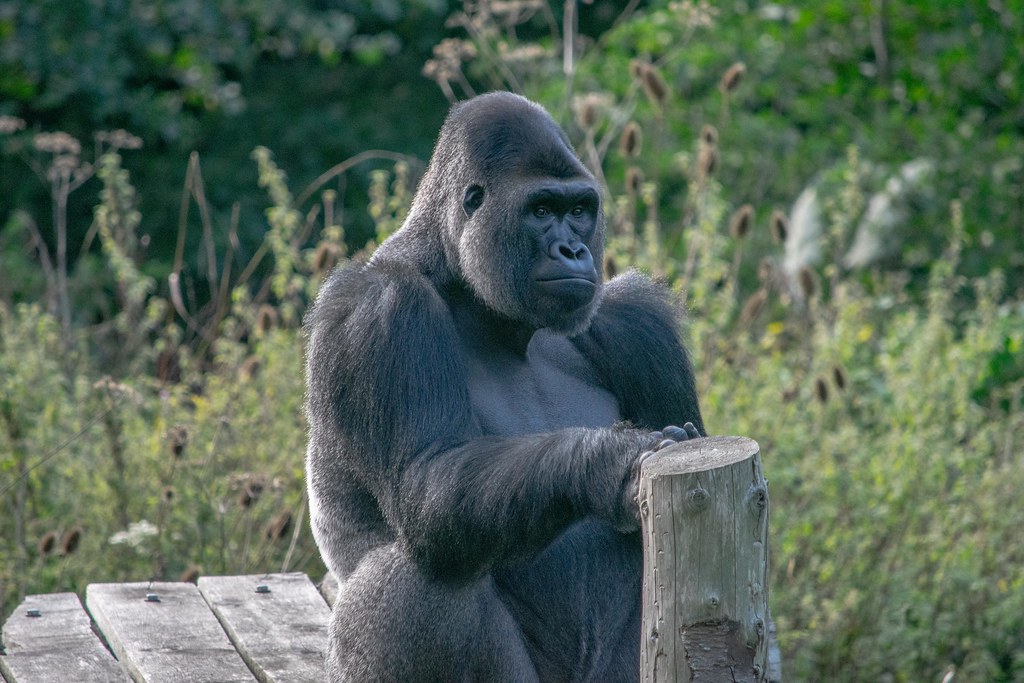Western Lowland Gorillas: The Widespread but Elusive Great Apes of Central Africa
Of all gorilla subspecies, the western lowland gorilla is the most numerous and widely distributed, yet it remains one of the least seen by tourists. Found in the dense tropical rainforests of Central Africa, these gorillas are smaller and lighter than their eastern relatives, but equally fascinating in behavior and social structure. Despite their numbers being higher than other gorilla groups, western lowland gorillas are still endangered, facing threats from poaching, habitat destruction, and disease. Unlike mountain gorillas, which have become the face of trekking tourism, western lowland gorillas live in some of the most remote and challenging habitats, making encounters rare and special.
Who Are the Western Lowland Gorillas?
The western lowland gorilla (Gorilla gorilla gorilla) is a subspecies of the western gorilla, distinct from the Cross River gorilla. They are generally smaller than eastern gorillas, with brownish-gray coats and a reddish-brown patch of hair on their crowns that makes them easy to identify. Their diet is diverse, consisting of fruits, leaves, stems, and occasionally insects, which they forage for across wide forest ranges. Socially, they live in groups led by a dominant silverback who protects and leads his family with authority and care.
Where Do They Live?
Western lowland gorillas are found across several Central African countries. Their range includes Cameroon, Central African Republic, Republic of Congo (Congo-Brazzaville), Gabon, Equatorial Guinea, and Angola. They thrive in tropical rainforests, swampy areas, and remote jungles where human access is limited. Some of the most notable destinations for seeing western lowland gorillas include:
-
Dzanga-Sangha Special Reserve in the Central African Republic, where habituated gorillas allow for rare close encounters.
-
Odzala-Kokoua National Park in the Republic of Congo, one of the best places for gorilla viewing and forest safaris.
-
Lopé National Park in Gabon, a UNESCO World Heritage Site rich in wildlife diversity.
Unlike mountain gorillas, which are concentrated in a small area, western lowland gorillas are more widely distributed but harder to track due to the vastness of their forests.
How Many Are Left?
Western lowland gorillas are the most numerous of all gorilla subspecies, with an estimated 100,000 individuals in the wild. However, these numbers are deceptive. Despite being widespread, they are endangered because their populations are spread across vast and fragmented habitats. Disease outbreaks, especially Ebola, have devastated populations in recent decades, killing thousands of gorillas in short periods. Combined with hunting and deforestation, their survival remains precarious.
Behavior and Lifestyle
These gorillas are highly social, with family groups typically led by a dominant silverback and consisting of several females and their offspring. They are mostly ground-dwelling but occasionally nest in trees, particularly in swampy or low-lying areas. Compared to mountain gorillas, western lowland gorillas are more elusive and wary of humans, making habituation programs more difficult. They are known for their strong bonds, intelligence, and varied vocalizations used for communication within the group.
Can Tourists See Western Lowland Gorillas?
Yes, though opportunities are limited compared to mountain gorilla trekking. The best chances to see them are in specialized reserves such as Dzanga-Sangha in the Central African Republic or Odzala-Kokoua in the Republic of Congo, where habituation projects have made select gorilla groups accessible to visitors. These experiences are raw and adventurous, often involving journeys deep into rainforests or swampy clearings known as bais, where gorillas come to feed on mineral-rich plants. Seeing western lowland gorillas is considered a privilege, as encounters are rare and require determination.
Conservation Challenges
Despite being the most numerous gorilla subspecies, western lowland gorillas are classified as endangered. The biggest threats they face include:
-
Poaching: Illegal hunting for bushmeat continues in some regions.
-
Habitat loss: Logging, agriculture, and infrastructure projects destroy and fragment forests.
-
Disease: Ebola outbreaks have killed thousands of gorillas, wiping out entire populations in some areas.
-
Low reproductive rate: Like all gorillas, they reproduce slowly, making recovery from losses difficult.
Conservation organizations and governments have established national parks and reserves to protect them, and community-based programs aim to reduce hunting by providing alternative livelihoods.
Why Western Lowland Gorillas Matter
Western lowland gorillas play a crucial role in the health of Central Africa’s forests. By feeding on fruits and dispersing seeds, they help maintain biodiversity and forest regeneration. Protecting them not only saves an iconic species but also preserves entire ecosystems that provide clean air, water, and climate regulation for millions of people.
Western lowland gorillas are Africa’s most widespread gorillas, yet they remain elusive and endangered. Their vast range across Central Africa, combined with the difficulty of trekking through dense forests, makes seeing them a rare and adventurous experience. Whether in the swampy clearings of Dzanga-Sangha or the remote forests of Odzala, encounters with these gorillas are deeply rewarding, offering a glimpse into the wild heart of Central Africa. Their survival depends on continued conservation, local community support, and global awareness. For those fortunate enough to meet them, western lowland gorillas are a reminder of both the richness of Africa’s forests and the urgency of protecting them.





